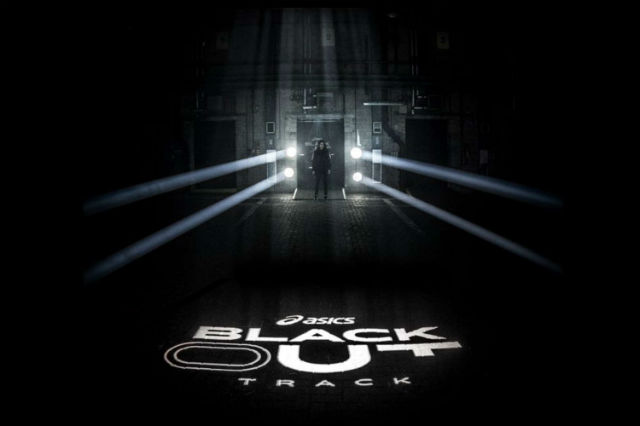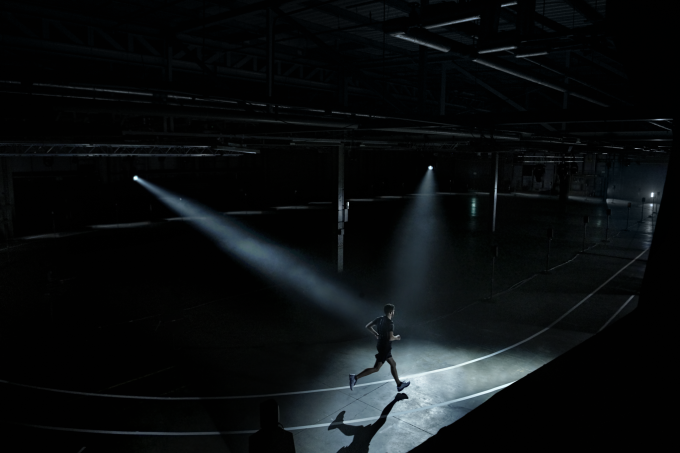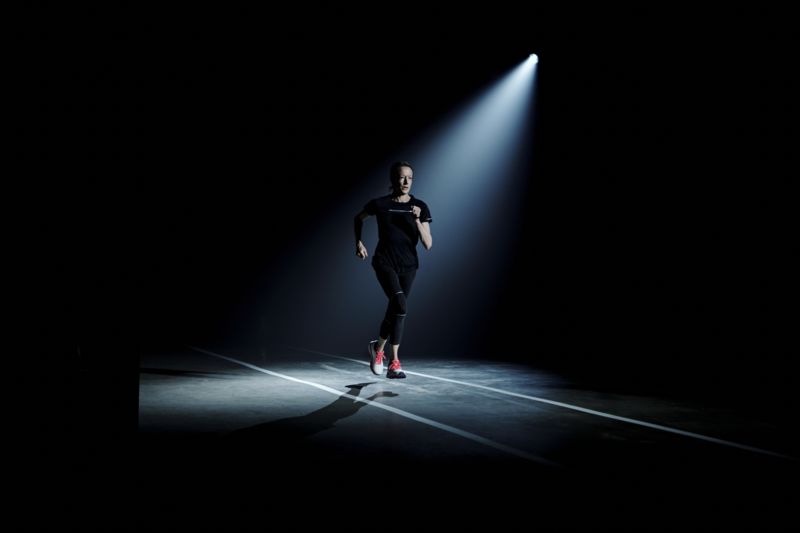In an unusual experiment by ASICS, the sports company proved that endurance running performance can be significantly altered by manipulating physical conditions.
In the experiment – part of a four-day series of tests on the ASICS Blackout Track, the world’s first running track to train the mind – ten runners with a range of abilities ran 5km in ‘lights on’ race conditions, music playing, crowds cheering and access to feedback about distance and lap times.

Then they ran 5km again in ‘blackout’ conditions with all distractions removed, that is, dim lighting, with white noise muffling sound, no motivation or encouragement and no feedback from technology.
The participating runners in the experiment, had included two Singaporeans, Zong ZiJie – an actor, runner and martial arts practitioner and Chase Tan – a basketball player.
Other runners also included Iwan Thomas from Great Britain, a former European and Commonwealth Games champion and Dewi Griffiths, a 5,000m and 10,000m runner also from Great Britain, as well as actress Aishah Sinclair from Malaysia and fitness influencer Emily Abbate from the United States.
In the experiment, each participant had their lap times and heart rates monitored and completed the NASA Task Load Index, a tool that helps assess the perceived physical and mental workload of a task.
And ASICS found out that by making conditions tougher for running – that is, without any performance indicators, no clear finish line or positive encouragement such as cheering – even experienced athletes saw a drop in their 5km times by an average of 60 seconds.
Said Dr Jo Corbett, leader of the Human Performance and Health Research Group at The University Of Portsmouth, and top coaches, “It was the same ten runners in the same physical environment, the same 150-meter track, the same running surface and the same apparel and footwear (the ASICS GEL-KAYANO 25), but by manipulating the runners’ perception and experience of the environment, every runners’ performance was affected.”
This timing is the difference between winning a medal or not, in competitive endurance sports.
This 4.5 per cent drop in 5km performance had been bigger than ASICS had expected. Furthermore, in some cases, the difference was as much as two minutes.
To put this into context, a 5 per cent difference would equate to running nine minutes faster or slower for a three-hour marathoner.

Other findings from the experiment, also include a slower pace in the first nine laps and the absence of an end-spurt during the last three laps in the ‘blackout’ condition, as well as the ratings of perceived exertion during the last lap being significantly lower in ‘blackout’ conditions, likely due to the lower pace and having no finish line.
Runners’ heart rates during the last lap were also significantly lower in the ‘blackout’ conditions’ too.
However runners who ran on the Blackout Track had experienced the feeling of the ‘runners’ high’ – despite the challenging conditions.
Said Chevy Rough, ASICS ambassador and Human Performance Coach, who coached each participant following their run, “Despite the challenging conditions on the track, almost every runner said they felt a kind of euphoria at some point, which they referred to as pure running. It shows the power of getting more in-tune with ourselves by occasionally shutting out distractions.”
Agreed American athlete Deena Kastor, “For me, the track was a reminder of the simple joys that running offers; a rush of endorphins, or a quiet place to find ourselves in. Whether you are pro athlete or an everyday runner, mental restraints can limit us, but we all have the power to think our way to success.”
This experiment by ASICS ties in with the brand’s belief that harmonising mind and body is crucial to enable optimal performance.
Said Professor Samulele Marcora, Director of Research at the University of Kent’s School Of Sports and Exercise Sciences, who had helped to devise the unusual experiment, “We wanted to show the critical role that the mind plays in athletic performance. The difference we saw between the experiment conditions in just one day, is similar to the difference that you would typically see after a four-week high-intensity training programme. So the mind should not be underestimated.”

In fact too, ASICS has already put the findings from the experiment into practice by providing runners with the tools to train their mind.
And more than 174,000 people have already taken part in a RunKeeper Move Your Mind challenge and two ASICS running communities – FrontRunners and Sound Mind Sound Body – will be hosting ‘Blackout’ sessions which will replicate the experience of the track, for all runners who are keen.

Leave a Comment